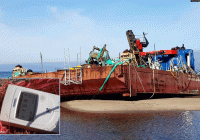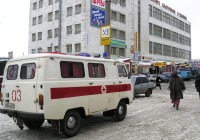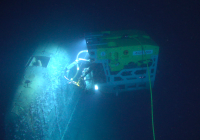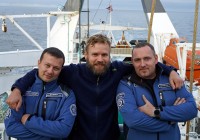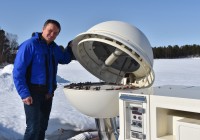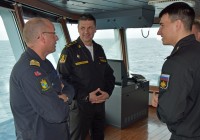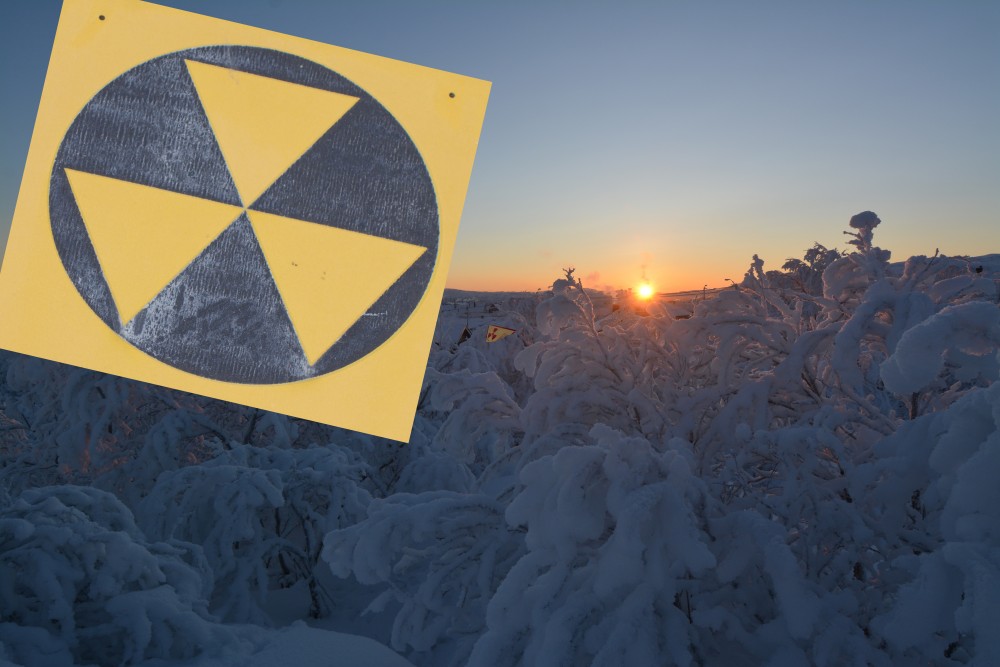
Arctic Council creates new expert group on nuclear emergencies
ADVERTISEMENT
Two fatal accidents during the summer of 2019 was a wake-up call for radiation emergency authorities monitoring northern waters.
On July 1st, the nuclear-powered special purpose submarine Losharik catches fire when on mission outside the Kola Peninsula. Six weeks later, a nuclear-powered cruise missile explodes while being recovered from the seabed outside Nenoksa naval weapons testing site in the White Sea.
While Russia has been very reluctant to share information about what happened at the two accidents, the country is a team-player when the Arctic Council now has agreed to establish a dedicated expert group on radiation and nuclear incidents.
The formal decision was taken at the meeting of the Arctic Council’s Working Group on Emergency Prevention, Preparedness and Response (EPPR) in Reykyavik on December 4th.
All eight Arctic states will appoint experts and observer states are encouraged to participate. To strengthen the group’s role, the International Atomic Energy Agency (IAEA) is invited to join the meetings.
ADVERTISEMENT
Inside the Arctic Circle, the number of nuclear-powered vessels has increased sharply over the last decade.
Tensions between Russia and NATO have led to more sailings with reactor-powered submarines, especially in the Norwegian, Barents- and White Seas, but also under the ice in the high Arctic. Northern Norway saw a record number of 12 visiting NATO nuclear-powered submarines in 2018. And while the Arctic Council members met in Reykjavik last week, Russia’s Northern Fleet still had a number of attack submarines sailing the Norwegian Sea. So did at least one American nuclear-powered submarine as reported by the Barents Observer.
Secondly, increased shipping and industrial activities along Russia’s Northern Sea Route are supported by more and larger nuclear-powered icebreakers.
Unfortunate, the history of operating reactors and deploying nuclear weapons to the Arctic has a bad record with radioactivity released to the environment and exposure to people; nuclear weapons testing at Novaya Zemlya, the crash of a U.S. bomber with plutonium warheads at Thule airbase on Greenland, sinking submarines like the Komsomolets, Kursk and K-259. Several other submarines have suffered serious reactor accidents and in the Kara Sea, thousands of containers wit radioactive waste is dumped together with 16 reactors.
The Arctic Council, though, can not engage in anything related to military activities.
The list of potential incidents with possible releases of radioactivity exposing people living or working in the Arctic is long. How to share knowledge and information about each countries’ preparedness capacities will certainly be on the agenda when the new expert group’s first formal meeting, likely to take place next spring on the Faroe Islands.
Chair of the expert group in the starting period, Øyvind Aas-Hansen with the Norwegian Radiation and Nuclear Safety Authority, tells the Barents Observer that one interesting topic that might be brought to table is defining the risk potential for emergencies due to nuclear and radiological material and activities that pose a threat in the Arctic.
«We aim at protecting Arctic inhabitants and their livelihoods and the Arctic environment,» Øyvind Aas-Hansen explains.
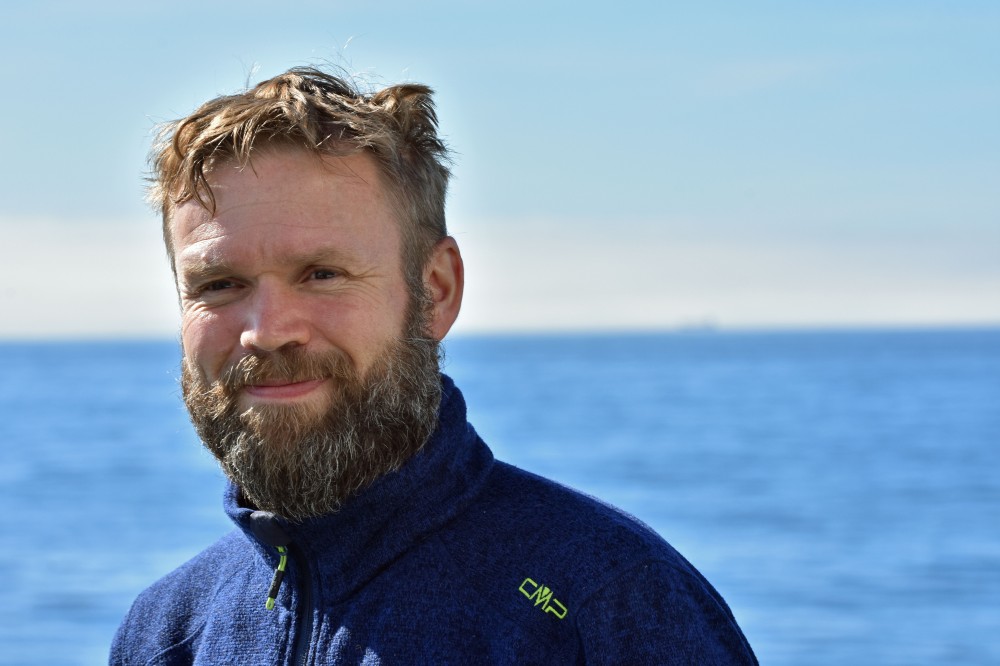
He said it is needed to «identify minimal preparedness and response arrangements and capabilities applicable to the Arctic region.»
Aas-Hansen said it could be special needs for coordinating emergency prevention and response that are «specific to the Arctic region.»
Both the United States and Russia have serious experiences from dealing with nuclear accidents in cold climate, like the US clean-up work after the Thule accident in 1968 and Soviet clean-up work after the leakages from Building No. 5 in Andreeva Bay in the early 1980s.
More reactors at sea
The Barents Observer has recently published an overview (pdf) listing the increasing number of reactors in the Russian Arctic. The paper is part of Barents Observer’s analytical popular science studies on developments in the Euro-Arctic Region.
According to the list there are 39 nuclear-powered vessels or installations in the Russian Arctic today with a total of 62 reactors. This includes 31 submarines, one surface warship, five icebreakers, two onshore and one floating nuclear power plants.
By 2035, the Russian Arctic will be the most nuclearized waters on the planet.
Looking 15 years ahead, the number of ships, including submarines, and installations powered by reactors is estimated to increase to 74 with a total of 94 reactors, maybe as many as 114. Additional to new icebreakers and submarines already under construction, Russia is brushing dust of older Soviet ideas of utilizing nuclear-power for different kind of Arctic shelf industrial developments, like oil- and gas exploration, mining and research. “By 2035, the Russian Arctic will be the most nuclearized waters on the planet,” the paper reads.
Also, existing icebreakers and submarines get life-time prolongation. The average age of the Northern Fleet’s nuclear-powered submarines has never been older than today. Several of the submarines built in the 1980s will continue to sail the Barents Sea and under the Arctic ice-cap until the late 2020s.

In August, Russia’s first floating nuclear power plant, “Akademik Lomonosov”, will be towed from Murmansk to Pevek, a port-town on the northeast coast of Siberia.
Other plans to use nuclear reactors in the Russian Arctic in the years to come include many first-of-a-kind technologies like sea-floor power reactors for gas exploration, civilian submarines for seismic surveys and cargo transportation, small-power reactors on ice-strengthen platforms.
In the military sphere, the Arctic could be used as testing sites for both Russia’s new nuclear-powered cruise-missile and nuclear-powered underwater weapons drone. Both weapons were displayed by President Vladimir Putin when he bragged about new nuclear weapons systems in his annual speech to the Federation Council last year.
An Arctic Council summary report, presented to the Ministerial Meeting in Rovaniemi in May as a deliverable by the Emergency Prevention, Preparedness and Response (EPPR) Working Group highlight the risks: “The presence of radiological and nuclear material in the Arctic poses a risk for serious incidents or accidents that may affect Arctic inhabitants and their communities, the Arctic environment, and Arctic industries, including traditional livelihoods such as fisheries and local food sources.”
For Norway, Russia and Iceland, a nuclear accident in the Barents Sea could be disastrous for sales of seafood. The three countries export of cod and other spices is worth billions of Euros annually.
You can help us…
…. we hope you enjoyed reading this article. Unlike many others, the Barents Observer has no paywall. We want to keep our journalism open to everyone, including to our Russian readers. The Independent Barents Observer is a journalist-owned newspaper. It takes a lot of hard work and money to produce. But, we strongly believe our bilingual reporting makes a difference in the north. We therefore got a small favor to ask; make a contribution to our work.
ADVERTISEMENT
The Barents Observer Newsletter
After confirming you're a real person, you can write your email below and we include you to the subscription list.



